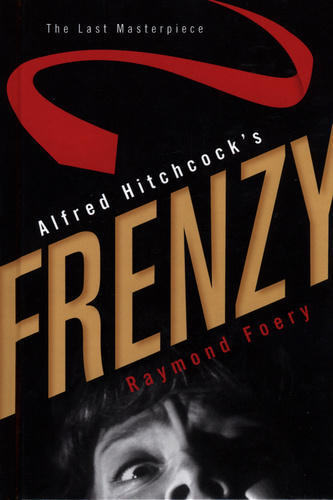Alfred Hitchcock's Frenzy: The Last Masterpiece (2012) by Raymond Foery
 | |
| Raymond Foery | |
| Scarecrow Press (2012) | |
| ISBN 0810877554 (hardback) | |
| LibraryThing | |
Product Links
Synopsis
After an unparalleled string of artistic and commercial triumphs in the 1950s and 1960s, Alfred Hitchcock hit a career lull with the disappointing Torn Curtain and the disastrous Topaz. In 1971, the depressed director traveled to London, the city he had left in 1939 to make his reputation in Hollywood. The film he came to shoot there would mark a return to the style for which he had become known and would restore him to international acclaim. Like The 39 Steps, Saboteur, and North by Northwest before, Frenzy repeated the classic Hitchcock trope of a man on the run from the police while chasing down the real criminal. But unlike those previous works, Frenzy also featured some elements that were new to the master of suspense's films, including explicit nudity, depraved behavior, and a brutal act that would challenge Psycho's shower scene for the most disturbing depiction of violence in a Hitchcock film. In Alfred Hitchcock's Frenzy: The Last Masterpiece, Raymond Foery recounts the history-writing, preproduction, casting, shooting, postproduction, and promotion-of this great work. While there are other books on the production of an individual Hitchcock film, none go into as much detail, and none combine a history of the production process with an ongoing account of how this particular film relates to Hitchcock's other works. Foery also discusses the reactions to Frenzy by critics and scholars while examining Hitchcock's - and the film's - place in film history forty years later. Featuring original material relating to the making of Frenzy and previously unpublished information from the Hitchcock archives, this book will be of interest to film scholars and millions of Alfred Hitchcock fans.
Reviews
After a string of flops and in need of a hit, Alfred Hitchcock returned to his native London in 1971 to make Frenzy, his darkest film since Psycho... After Torn Curtain and Topaz performed so poorly, Hitchcock was in a professional slump and desperate for material that excited him. Arthur La Bern’s 1966 novel Goodbye Piccadilly, Farewell Leicester Square, detailing the exploits of a serial killer in London who raped and murdered young woman à la a modern-day Jack the Ripper, was just such a book. Goodbye soon became Frenzy, with a screenplay by playwright Anthony Shaffer. Like many of the best Hitchcock films, Frenzy features a man on the run trying to clear his name, as well as a murder, though the strangulation of Babs Milligan with a necktie is more brutal than most Hitchcock deaths. Shooting in London represented the first time the director had returned for more than a holiday since 1939, and he took full advantage, staging several outdoor scenes. While Foery’s shot-by-shot analysis of the Frenzy shooting schedule does grow tedious, it offers more new insights than the chapters devoted to rehashing Hitchcock’s mastery of montage and mise-en-scene.
— Publishers Weekly
Preview
Image Gallery
Images from the Hitchcock Gallery (click to view larger versions or search for all relevant images)...
